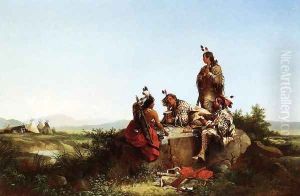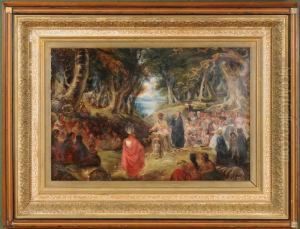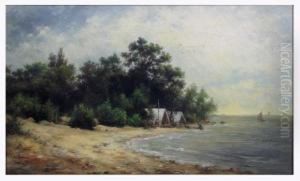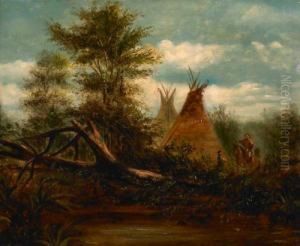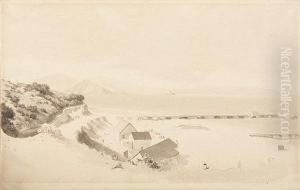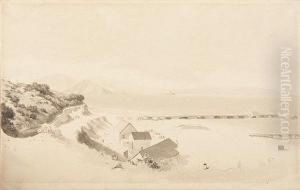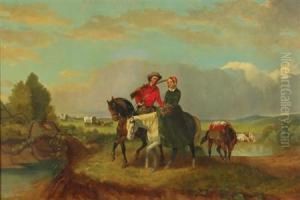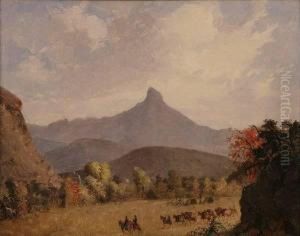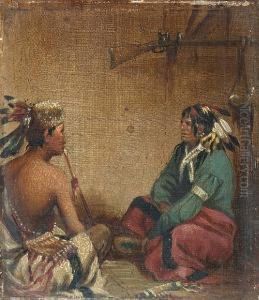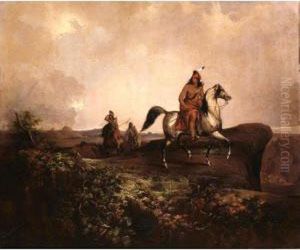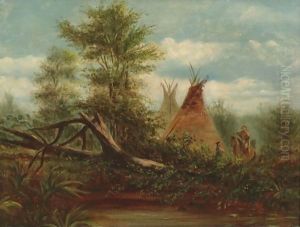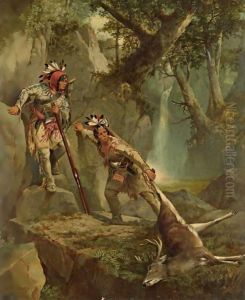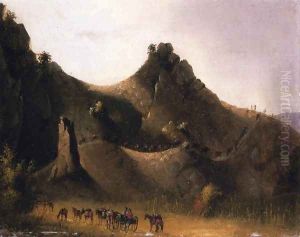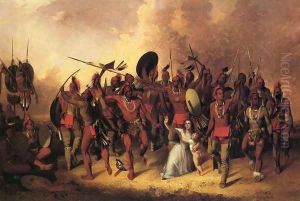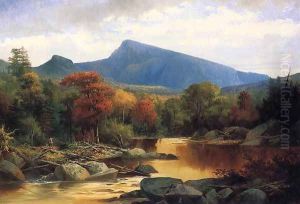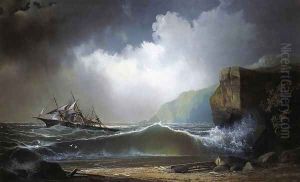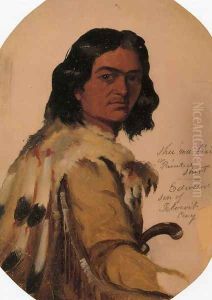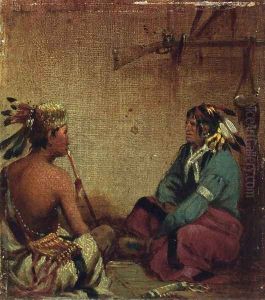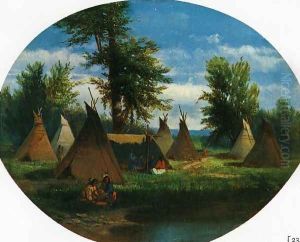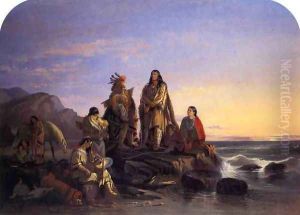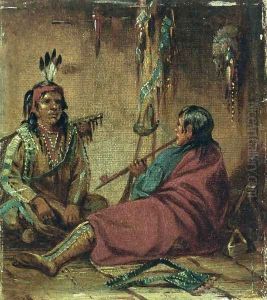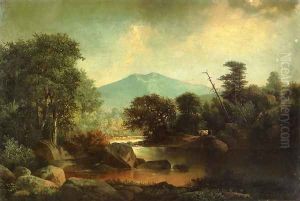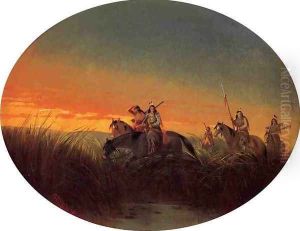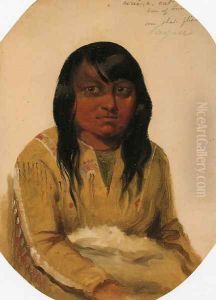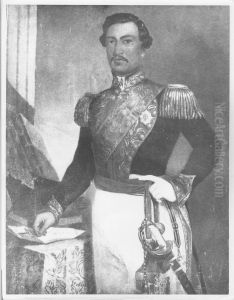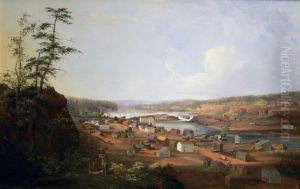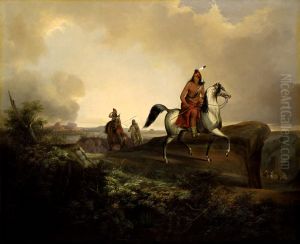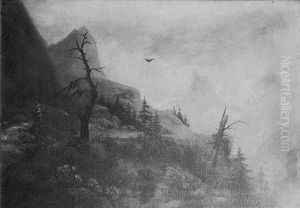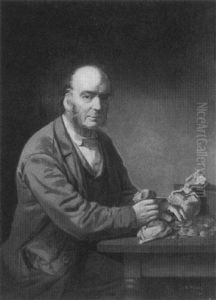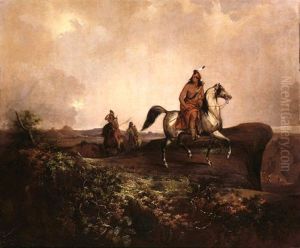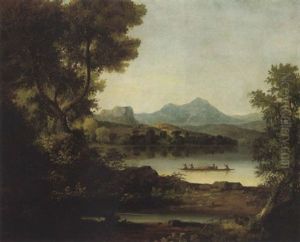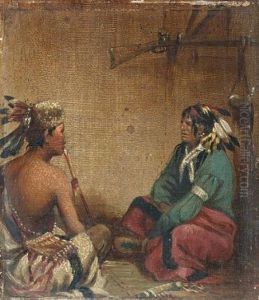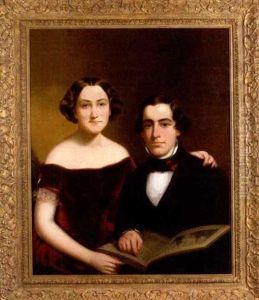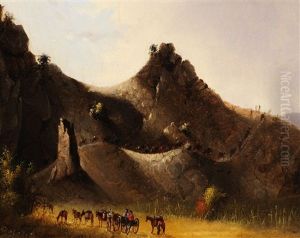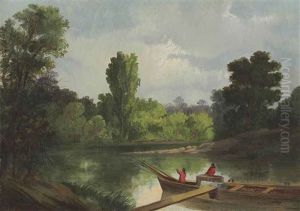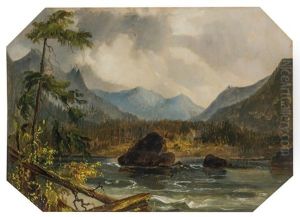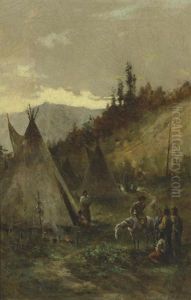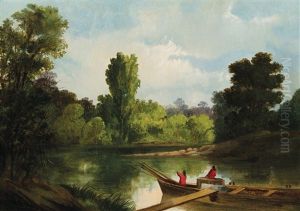John Mix Stanley Paintings
John Mix Stanley was an artist of American birth, known for his paintings of Native Americans and the landscapes of the Western United States. Born on January 17, 1814, in Canandaigua, New York, Stanley's early life offered little hint of his future fame. His access to formal education and art instruction was quite limited, and his early work included painting signs and houses.
In 1842, Stanley undertook a pivotal journey when he traveled west to the Rocky Mountains with a trapping party. This expedition was the beginning of his lifelong fascination with the American West and its indigenous peoples. He journeyed further, often accompanying government-sponsored expeditions, which allowed him to document the landscape and native tribes through his art. Stanley became part of a group of artists, such as George Catlin and Karl Bodmer, who were dedicated to preserving a visual record of Native American cultures, which were rapidly changing due to European-American settlement and government policy.
One of Stanley's most significant contributions was his participation in the Pacific Railroad Survey of 1853–54, where he documented the landscape and peoples encountered along the proposed routes for the transcontinental railroad. His work from this time provides an important historical record of the United States before the widespread impact of industrialization.
Tragedy struck Stanley's career during the Smithsonian fire of 1865, where many of his paintings, which were stored at the institution, were destroyed. This event devastated Stanley, as it erased a large portion of the visual history he had worked so hard to create. Despite this loss, he continued to paint and even attempted to recreate some of his lost works from memory.
Stanley's work was recognized in his time for its combination of detail and artistry, though after his death on April 10, 1872, in Detroit, Michigan, his legacy somewhat faded into obscurity. This was in part due to the destruction of many of his paintings in the Smithsonian fire, but also because the art world's attention shifted towards different styles and subjects. In recent years, there has been a resurgence of interest in Stanley's work, and he is now recognized for his contribution to the historical record of the American West and for his artistic endeavors in documenting an important era in American history.
